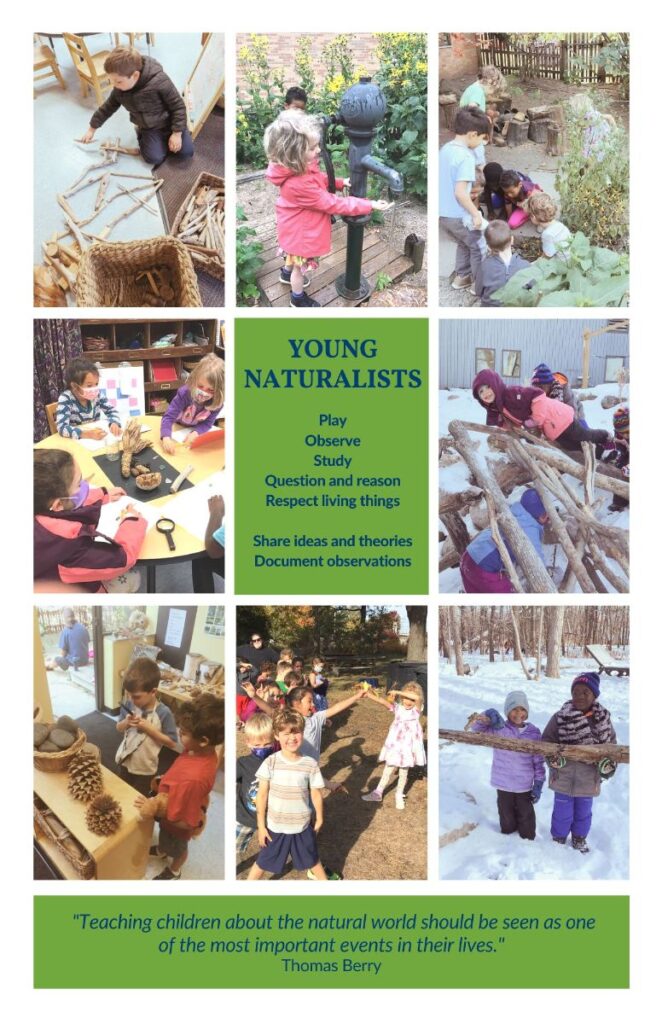If you go for a walk outside with a child, you will quickly notice their innate naturalist instincts. They will stop and observe even the tiniest things, and if you go for the same walk regularly, they will notice even the subtlest of changes.
As adults, it is our responsibility to help cultivate this natural curiosity in children by encouraging them to further develop a drive to explore their surroundings with a sense of observation, and maybe more importantly, a sense of wonder.
Wondering and being a naturalist go hand-in-hand.
In Crow Planet, Essential Wisdom from the Urban Wilderness. Lyanda Lynn Haupt writes:
On the lookout for wonder in modern students of natural history, I was struck by a line in Robert Michael Pyle’s recent Sky Time, where he spoke of the “certainty of wonder in all places.” Though this is a lovely sentiment, perhaps it is not quite right. Surely there is the certainty of the wondrous in all places. But wonder is a response, an attitude of mind and heart, a graced completion of a circle between observer and observed.
Wondering is not just a passive process of observation but an active engagement with the world that involves curiosity and choice. As Haupt points out in Crow Planet, science is critical, but it is more than data gathering and naming, it is also a practice of wondering.
By helping our children further develop a sense of wonder, we are nurturing their curiosity and encouraging them to think critically about the world around them.
To support our children’s curiosity, we must recognize them as thinking and reasoning individuals who are capable of exploring the world in their own way. Of course, this doesn’t mean that we must cater to every curiosity or need our children have. Rather, we must thoughtfully structure time and opportunities for our children to observe, wonder, and build on their discoveries. By intentionally creating space for observation and wondering, we are helping our children develop essential skills such as critical thinking and problem-solving. And by studying, questioning, and sharing our discoveries with them, we are encouraging them to explore the world with a sense of wonder and curiosity.
Marshall understands the value of cultivating a sense of wonder in his Kindergarten students, who are naturally curious and observant. By providing them with ample opportunities to observe, question, and share their experiences, Marshall is helping them develop a deeper appreciation for the natural world and their place in it. When students play, they are navigating their relationships with their environment and with each other. They are sometimes navigating conflict and problem solving. These are all important qualities that help naturalists explore and interpret the natural world.
We know that wonder deepens observation, that when students wonder they are responding to an observation and engaging in learning. As they continue to explore and learn, they are actively constructing their understanding of the world around them. By valuing the importance of wonder and dedicating time to it, students are empowered to become lifelong learners who approach their studies with an open mind and a desire to learn.
In 1956, Rachel Carson wrote an article titled “Help Your Child to Wonder.”
If I had influence with the good fairy who is supposed to preside over the christening of all children, I should ask that her gift to each child in the world be a sense of wonder so indestructible that it would last throughout life, as an unfailing antidote against the boredom and disenchantments of later years, the sterile preoccupation with things that are artificial, the alienation from the sources of our strength.
She believed that this quality would serve as an antidote to the disillusionment and detachment that often plague adults in later life. As students progress through their education at FSMN, teachers strive to continue instilling a sense of wonder in them that will not only enrich their lives but also inspire them to become advocates for environmental justice.






